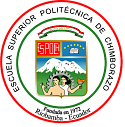Propagation models applied in open areas under LTE technologies and fitting with measurements
DOI:
https://doi.org/10.47187/perspectivas.5.2.197Keywords:
Propagation Model, LTE, MovistarAbstract
This paper presents an analysis of propagation models using power intensity levels measured with the Cell Info Lite application at the Department of Computer Science and Electronics of ESPOCH University, using Movistar’s LTE technology. Using Google Earth software, the base radio was precisely located based on the coordinates obtained. Concentric circles were then drawn, covering 145 points outside the Department of Computer Science and Electronics, covering an area of 36400 m^2. At each point, three measurement campaigns were performed on different days, but with similar schedules. The objective was to compare propagation models and observe variations in losses within the proposed scenario. The findings indicate that the Erceg model aligns closely with the measured values obtained from the Cell Info Lite application. Therefore, this model is considered the most suitable for this particular scenario. These results have significant implications for the deployment and optimization of LTE technology, specifically in scenarios similar to the Department of Computer Science and Electronics at ESPOCH University. The selection of a suitable propagation model, such as the Erceg model, can greatly improve network planning, coverage and performance for Movistar users.
Métricas
References
J. C. Gallagher, “Fifth-generation (5g) telecommunications technologies: Issues for congress,” Congressional Research Service, no. 1,
A. S. Gillis, “Lte (long-term evolution),” TechTarget, no. 2, 2023.
A. Flores, H. Moreno, J. Ribadeneira, and D. Moreno, “Analisis ´
comparativo de modelos de propagacion en la telefon ´ ´ıa movil en la ´
banda de 1900 mhz (lte) a traves de mediciones de campo el ´ ectrico ´
en la ciudad de ambato,” MAskay, no. 3, 2023.
E. A. Ponce Castillo, J. S. Ledesma Buele, R. Puchaicela Cuenca,
and K. J. Miraba Cajamarca, “Estudio comparativo de modelos de
propagacion con el an ´ alisis de la intensidad de la se ´ nal lte de las ˜
estaciones base con el area de cobertura en riobamba - ecuador,” ´
Coinciencia Digital, no. 4, 2022.
J. M. Torres, Pinto-Mangones, M. R. Macea A., N. A. Perez-Garc ´ ´ıa,
and L. M. Rujano, “Modelo para la estimaciOn de las p ´ Erdidas de ´
propagaciOn en redes wlan operando en 2,4 ghz y 5,8 ghz, para ´
ambientes interiores de edificios comerciales,” no. 5, 2015.
B. Vique, M. Escobar, A. Proano, C. Bayas, and A. Infante, “Com- ˜
paracion de modelos de propagaci ´ on de radio en cinco celdas de ´
cobertura lte de riobamba - ecuador,” Revista Tecnologica Espol ´ ,
no. 8, 2022.
L. Aguilar, “Walfisch bertoni model,” Share and Discover
Knowledge on SlideShare, no. 9, 2010. [Online]. Available:
https://pt.slideshare.net/eliche04/modelo-de-walfisch-bertoni
K. M. R. Jimenez, “Dise ´ No de modelo de propagaci ˜ On de ´
una red inalAmbrica wifi en 5 ghz,” 2018. [Online]. Available: ´
https://www.dspace.espol.edu.ec/retrieve/132244/D-CD106670.pdf
V. Erceg, L. Greenstein, S. Tjandra, S. Parkoff, A. Gupta, B. Kulic,
A. Julius, and R. Bianchi, “An empirically based path loss model
for wireless channels in suburban environments,” IEEE Journal on
Selected Areas in Communications, vol. 17, no. 12, pp. 1205–1211,
July 1999.
IEEE 802.16 Broadband Wireless Access Working Group, “Channel
models for fixed wireless applications,” Contribution to 802.16a,
[Online]. Available: http://wirelessman.org/tga/docs/80216a0301.pdf
M. Sadiq, N. T. Shabbir, H. Kashif, and R. Ullah, “Comparison of radio
propagation models for long term evolution (lte) network,” ResearchGate,
no. 10, 2011.
N. Shabbir, “Comparison of radio propagation models for long term
evolution (lte) network - ecuador,” International Journal of NextGeneration Network, no. 14, 2011
Downloads
Published
How to Cite
Issue
Section
License
Copyright (c) 2023 Luis Javier Sefla Urquizo, Joseph Alexander Aguilar Bonilla, Daniel Alejandro Basantes Cherrez, Erick Alexander Tintin Sánchez

This work is licensed under a Creative Commons Attribution 4.0 International License.
Copyright
The authors of the manuscripts will retain their copyright on their articles published in Pespectivas Journal. These rights allow the authors to present their manuscripts in public, prepare derivative works, reproduce them physically by printing and distribute them on their social or research networks. These rights will remain unchanged as long as the authors respect the publication and free access policy of Perspectivas Journal.
Publication Rights
Perspectivas Journal reserves all first publication rights on each of the articles that the authors have sent to its review and publication process. It implies that authors will only exercise their copyright if they state the source and origin of the publication correctly, mainly when they distribute, share, present, or use their articles' total or partial content.














